A month ago today, two of my oldest and dearest friends arrived from the United States for a visit. One of them had never been to Italy, the other had been just once. I’d been looking forward to the visit for many months and had a list a kilometer long of things I hoped to do with them.
Early on our agenda was a quick trip to Switzerland. We’d planned to take the Trenord train from Milano to Tirano, then transfer to the stunning and storied Bernina Express to wind our way up to St. Moritz, elevation 1800m/6000ft. But there was a train strike in Italy, so instead we rented a car and the four of us drove the first leg of the journey before boarding the Bernina Express.
The 2.5-hour “Red Train” ride more than lived up to the hype, and we arrived in St. Moritz filled with excitement. We enjoyed a lovely lunch; a leisurely afternoon walk around town; and time in the hotel’s pool, sauna, and cold-plunge bath.
Over dinner in a dreamy wood-paneled chalet, I noticed that it was a bit of a challenge for me to sit up straight. I’d been having some pain in my back for a few days, but I assumed I’d just overdone it at the gym with my new personal trainer. No big deal, I thought.
Monday morning, we went for a walk in a winter wonderland of freshly fallen snow—including on the frozen-solid Lake St. Moritz, famous for hosting wintertime horse races, polo matches, and even classic car events—and fit in one more quick swim before checking out of the hotel. All in all, a very enjoyable 21 hours in picture-perfect St. Moritz.
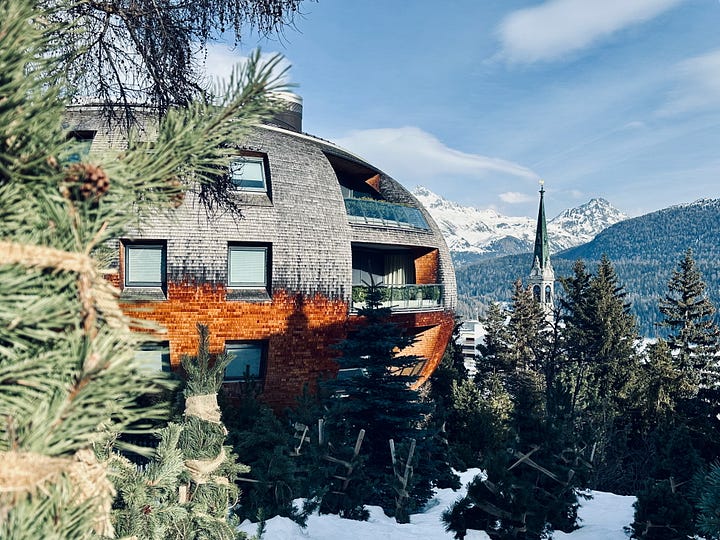
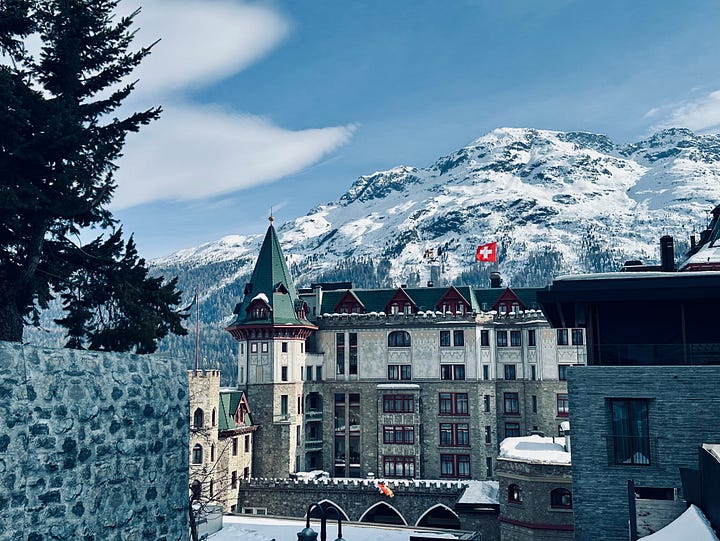
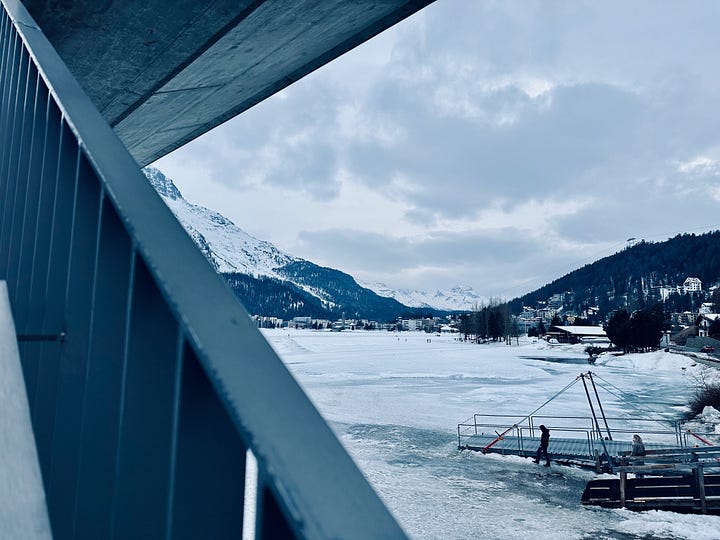

Everything Falls Apart
But as we boarded the hotel’s shuttle van for the short trip down to the train station, things quickly began to unravel. I suddenly felt intense abdominal pain, along with a stabbing ache in my back. Unsure of what was happening, I didn’t say anything to anyone in the hopes that it would somehow just go away.
We arrived at the station about 25 minutes before our train departed, and as I sat chatting with one of my friends, something shifted inside. I abruptly turned to her and said, “I feel nauseous, I need to go find a restroom” and walked away. Ten minutes later, I called my husband Andrew and blurted out, “I just got violently ill and there is no way I can get on that train.”
Thirty minutes later, stomach now empty but still in the restroom and still in great pain, I googled “heart attack symptoms” and was unnerved to see that I had two of the six listed by the American Heart Association. I recalled a friend’s recent tale of an afternoon at a museum with a friend who kept complaining of back pain, only to find out that evening that he’d actually been having a heart attack.
Feeling like I was in a bad dream, I told Andrew I needed to go to the hospital. He suggested our friends take the next train back to Milan, as there was nothing they could do for me there, and then he and I got in a taxi for a very long 12-minute ride to the nearest emergency room at Spital Oberengadin (Upper Engadin Hospital).
When we arrived at the spital—which was as nice and shiny as you’d imagine a Swiss hospital would be—I handed my ID to the woman at the counter and explained that I’d suddenly become very ill and that I needed to make sure I was not having a heart attack. That was about all I could get out before I headed once again to the restroom—but not before hearing her explain to Andrew that my tessera sanitaria (my Italian public health insurance card) was not valid in Switzerland because I was not an EU citizen. Translation: I was uninsured in $t. Moritz. This caught both of us by surprise, and while it certainly seemed bad, I knew leaving was not an option.
I was soon brought back to a bed in the ER, where I was met by friendly and efficient nurses and doctors who spoke German, Italian, and English. They first did an EKG and fairly quickly ruled out a heart attack. That was obviously a relief, but it also opened up a lot more questions.
They drew a bunch of blood for lab work. They did a sonogram and ruled out appendicitis. They dismissed the idea of meningitis. And they did a urine test that came back negative for kidney stones, which surprised the main nurse caring for me, who’d felt confident that was probably what was afflicting me.
In between all of this activity, with various doctors and nurses coming and going, I lay on that stretcher in some of the worst pain of my life. An alarm on one of the machines I was hooked up to kept beeping loudly, indicating my oxygen levels were too low.1
What exactly was happening to me?
Throughout the day, we saw numerous patients being wheeled past, held immobile by neck braces, dressed in ski apparel and obviously coming straight from the slopes. Andrew remarked dryly, “I don’t think they get a lot of people with your type of symptoms in this hospital.”
As we dragged past the 5-hour mark, I began to worry that they wouldn’t be able to figure out what was wrong and would discharge me, which I knew would be a mistake, because something was definitely very, very wrong with me.
At about Hour 6, a more senior doctor came in. He spoke with me for a couple minutes, looked at his team, and said, “He needs a CT scan. I’m pretty sure he has kidney stones.” Soon I was wheeled away, sans watch and wedding ring, and told to hold my breath while my body was passed in and out of the huge imaging machine.
Less than an hour later, the diagnosis came back. The urine test had been wrong. I had two kidney stones, one of which was still in one of my kidneys, the other of which was not. The latter is the one that was causing all the pain. I would need to spend the night in the hospital.
After they wheeled me up to my room, they gave me the good stuff: IV pain meds right into my veins. In 35-40 minutes, the pain was completely gone. Relief, at long last.
Before I drifted off to sleep, Andrew sent me a text from his hastily booked hotel room.
“I don’t even want to tell you how much the first night at the hospital cost.”
Tuesday morning, the doctors told me that the stone was too large to pass on its own, so I would need to have a “JJ stent” inserted. They could book the operating room for the following morning, which would of course mean another (uninsured) night in the Swiss hospital. When I asked how much the stent procedure cost, the doctor shook his head and said, “I don’t know, but it’s not cheap.”
Andrew and I talked. He called our doctor back in Milan, who said we could travel back to Milan for treatment as long as the Swiss doctors were okay with it—which they were, though they warned me that the pill versions of the pain meds were not as effective as the IV. “You will feel some discomfort.” That, it turns out, was quite an understatement.
(And I’m not even including the discomfort of the fact that my 24 hours in the Swiss hospital cost more than $10,000 USD.)
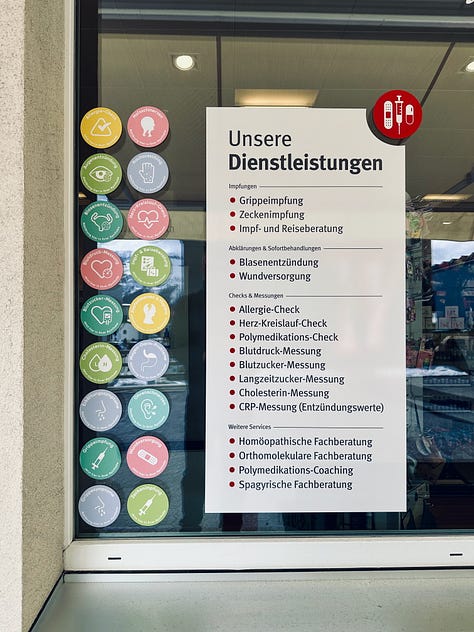
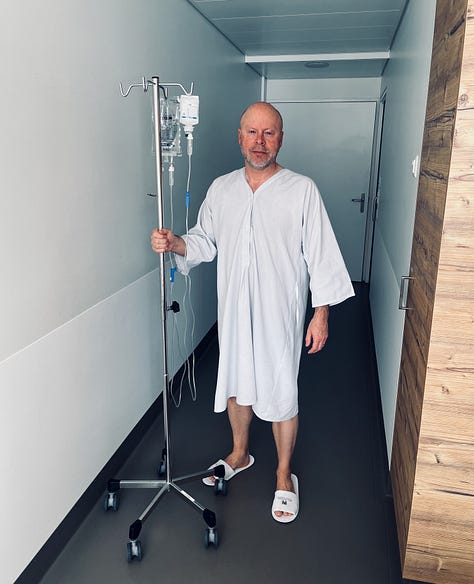
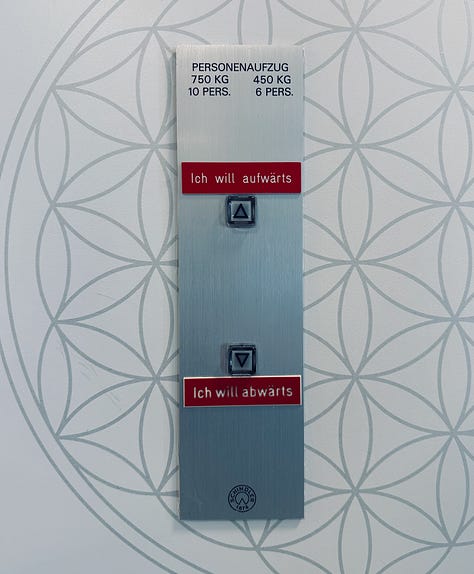
Phase 2: Back to Milan
After five hours of travel, we made it home to Milan and I slept okay with the help of the meds. Wednesday morning, we went to the ER at Niguarda Hospital, the largest in Milan and ranked one of the 50 best in the world. After more blood work, and more doctors and nurses coming and going for five hours, they told me that they would perform the JJ stent procedure the following morning. So we went home for the night.
This is when things got really, really bad. Because the pain meds—which I was supposed to take only every six hours—now pretty much stopped working after just 90 minutes. By 3:00 am, I was in agony, unable to sleep another minute. Ibuprofen and Paracetamol (Tylenol) seemed to make not even the tiniest dent in the pain. I contorted myself into every conceivable position for the rest of the night in a desperate and futile attempt to get just one second of relief from the unrelenting pain. “I may be dying,” my exhausted brain thought, “and maybe that wouldn’t be so bad, because at least I wouldn’t hurt anymore.”
By 7:00 am Thursday, we headed back to the hospital. When the folks in Admissions saw the condition I was in, they gave me a much higher priority level than the day before, and within 20 minutes I had an IV putting those sweet pain meds straight into my veins.
Now nearly 72 hours in since this all started, I was taken by ambulance to the south wing of the campus (the Niguarda complex is enormous) and I had the stent inserted. I won’t go deep into the details here, but I will mention that they did not do it under general anesthesia as I had thought, but under sedation, which they said would make me feel a little “drink.” Sadly, it did not make me feel drunk at all, and I assure you I groaned loudly with pain as I lay on that bed, legs up in stirrups, feeling about as vulnerable as I ever have in my life. The saving grace is that it was over in about 10 minutes, and after an hour or two in recovery, we headed home.
(Total charge from Niguarda: $0.)
Phase 3: Back on my Back
Throughout the next three days, I must have mentioned to Andrew a dozen times that while I was grateful the worst of the pain was gone, “I really don’t feel well. I just thought I would be doing better than this by now.”
On Sunday, I went down for what turned out to be a 2-hour nap. Something wasn’t right.
Monday morning, now a full week since this had all started, I took Bibi for a walk. We went on one of our usual routes, but it took twice as long as normal because I walked so slowly and had to keep stopping to rest on benches. When I got home, I took another long nap.
That afternoon, I began to feel feverish. Turns out, I had developed an infection.
I began a 5-day regimen of strong antibiotics. I battled the fever for three days, and I was stricken with fatigue like I’d rarely known, the worst at least since I’d had Covid, possibly the worst since I’d had mononucleosis 30 years ago. I slept solidly for 10+ hours at night, then took a long nap each day. I was so weary that even the jackhammering from the construction site across the street couldn’t keep me awake; I just napped right through it.
For days, I was breathless, winded, weak. And I felt very, very old. I thought often of the fact that what I was experiencing was relatively minor, as medical problems go. I wondered how I would ever cope with something more serious and/or more permanent. I couldn’t wrap my head around how much this had knocked me on my back.
Ultimately, I missed two full weeks of language school, two weeks of choir practice, two weeks of workouts with my trainer, two weeks of life, before I could begin venturing out and attempting to live life again.
It’s Not Over Yet
About 10 days ago, I finally felt like I’d legitimately turned the corner and was beginning to get stronger. Last Friday was the first day I actually felt more or less “normal.”
Unfortunately, the saga isn’t finished. I still have the kidney stones. I’m on medicine to try to help them dissolve, and next week, I’ll be undergoing lithotripsy shock wave treatment to try to break up the stones so that they can pass on their own. As for the JJ stent, it will stay in until at least January (gulp), and then either be removed or replaced.
Lessons Learned
Pain and inconveniences aside, it’s a shame I had to end up in a hospital to be reminded of what a gift a healthy body is, and how I should never take that for granted. I’m so grateful for the care I received in both Switzerland and Italy, and for the wonders of modern medicine that allow for such treatment. (How did people cope with things like this 200 years ago? Did kidney stones literally kill people?)
One of the biggest worries I had about moving overseas was what would happen if I had a medical emergency without having a good grasp of the language. Thankfully, due to the translation provided by my husband, and to the fact that most of the doctors, nurses, and hospital staff spoke at least some English, I got through this experience with no adverse consequences to speak of.
Another thing I thought about a lot during the ordeal was how instantly priorities change when circumstances change. My plan had been to just focus on having a great week with my visiting friends. Instead, my attention very quickly narrowed to how to get through the next minutes, the next hours. That was all I could cope with; everything else no longer felt manageable.
Of course, the most obvious take-away is to always, always make sure you have valid health insurance when you’re traveling. We’ve always been very good at this in the past, but for this particular trip, somehow it just never crossed our minds. (Perhaps because Switzerland is so close that it doesn’t feel like an “international” trip, and perhaps also because we were only planning to be there for one night.) I hope you’ll let our painfully pricey experience save you from having to learn the same lesson the hard way!
Anyway, that’s what’s been happening here. I hope to resume writing regularly again soon, because there’s obviously a lot of consequence happening in my home country of the United States, and in the world at large.
Stay well, everyone.
Michael
Best I can figure, my low oxygen levels were simply because of the high altitude.






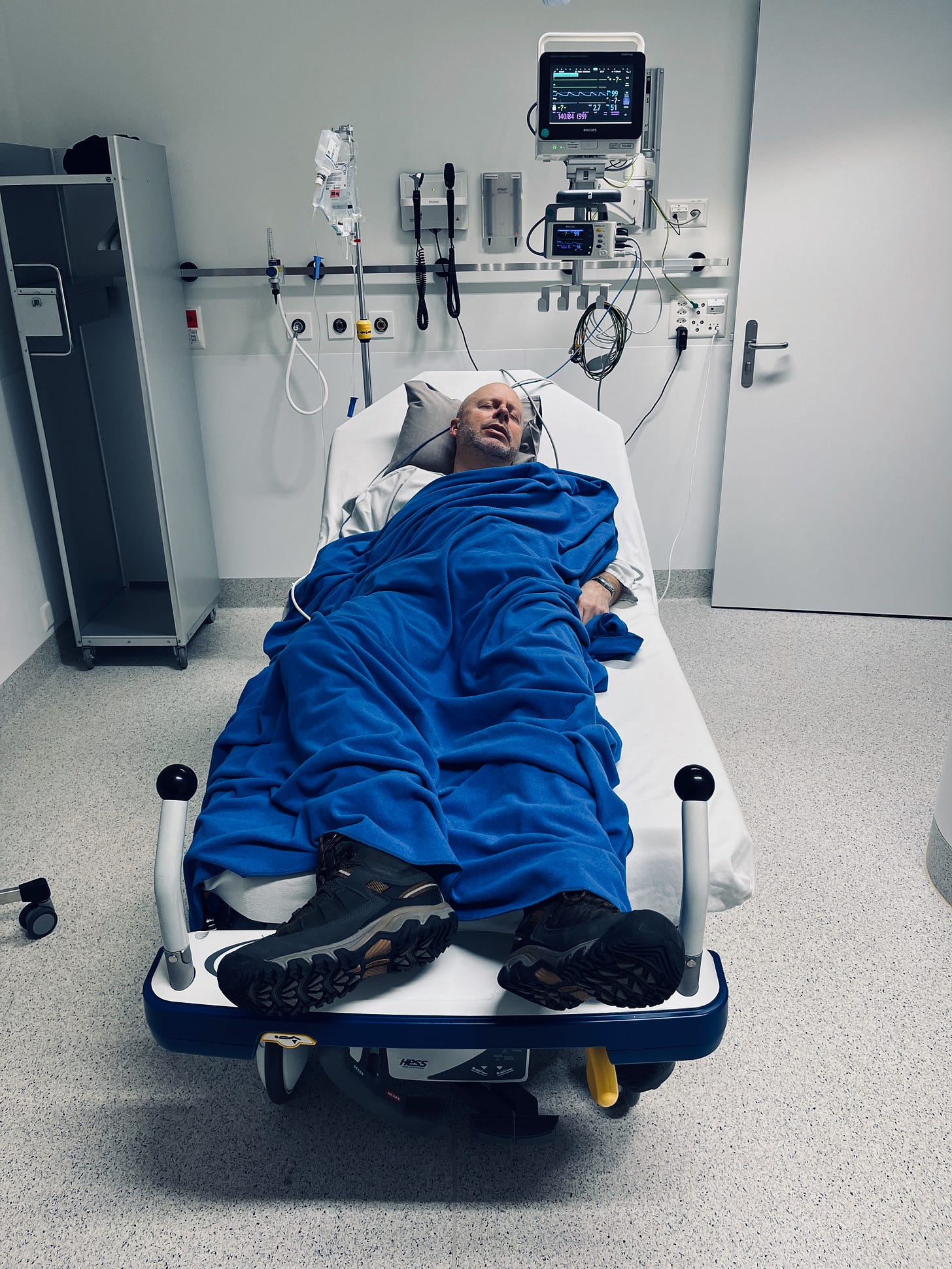
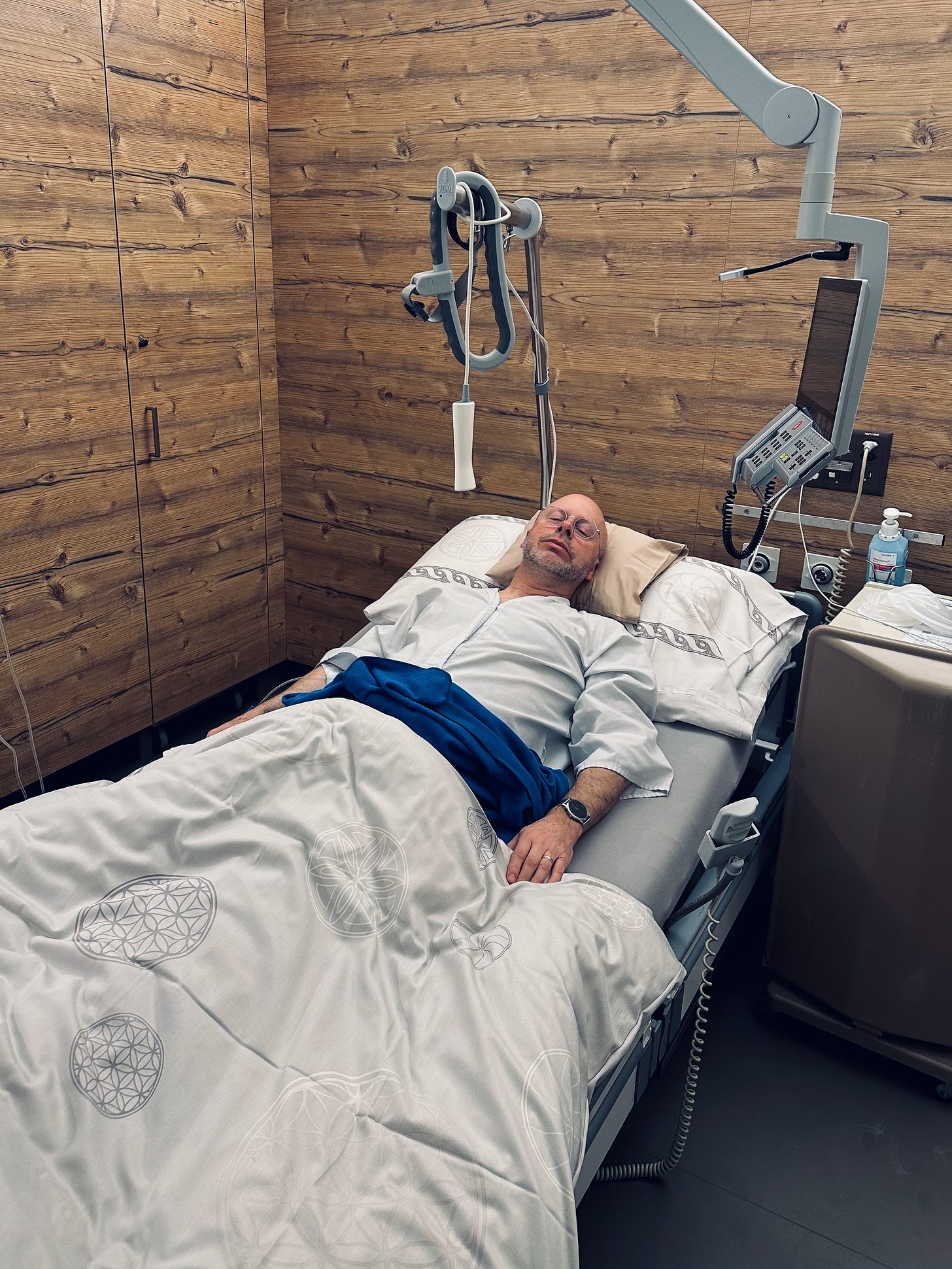


Well, that that was a riveting read for all the wrong reasons! Glad that you are in better form now and hopefully, you can close the chapter of this health debacle sooner rather than later.
Mike!! What a nightmarish experience! I was thinking it might be our Nashville Michigan sister friends. But I hope you are healing from this traumatic ordeal. Oh, life, you are full of tricks and turns. And our dear bodies have so many millions of parts that need to hold up for us. It’s really a wonder we last as long as we do. But I hope your body gets rest and restoration now. Thank you for sharing the story with us, though, because it is a cautionary tale, that could save many people a lot of trouble.